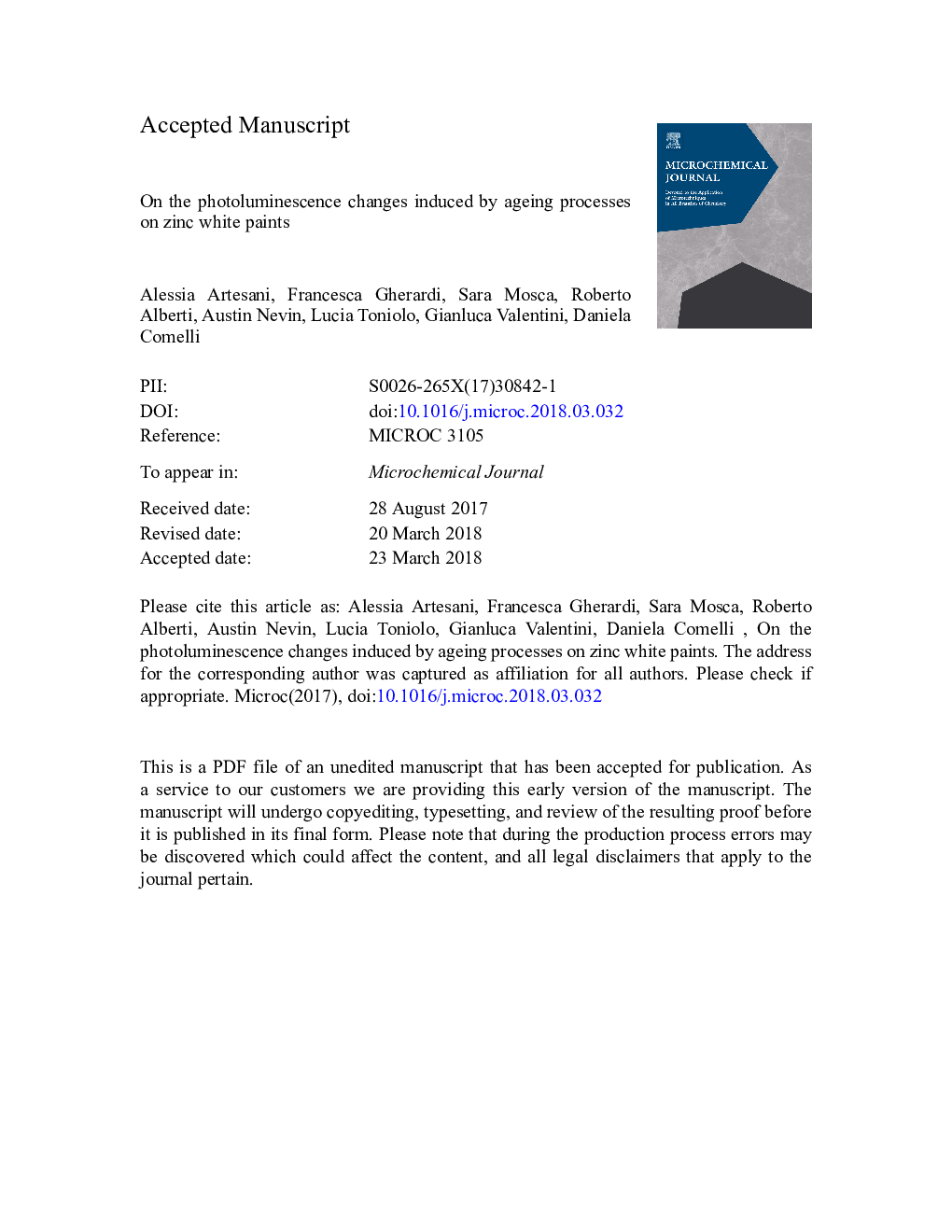| Article ID | Journal | Published Year | Pages | File Type |
|---|---|---|---|---|
| 7640934 | Microchemical Journal | 2018 | 17 Pages |
Abstract
Recent research is focusing on the study of interaction mechanisms between pigments and binders, as they are crucial for understanding paint ageing and conservation issues. In this work, we investigate these mechanisms and follow the changes induced by ageing on zinc white paint by employing Fourier Transform Infrared (FTIR) and Time-Resolved Photoluminescence (TRPL) spectroscopies. The two techniques, applied on thermally aged mock-up samples and on a 19th oil painting, provide complementary information on the effect of the binder on the ZnO pigment particles. The characterization of the infrared absorption spectra confirms the well-known tendency of amorphous metal carboxylate formation in zinc white paint following ageing. At the same time, the ageing of paint film produces significant changes in the photoluminescence emission from defect centres of ZnO. The emission that is mostly affected by the changes of the micro-environment is the blue band (430Â nm) - associated with surface defects - whereas the green emission (530Â nm) is stable. The results demonstrate that the evolution of the pigment-binder system has detectable consequences on the crystalline structure of the pigment particles and we speculate that the main cause of these modifications is the functionalization of the pigment particle surfaces. The possibility to follow crystal structure changes with time-resolved photoluminescence can thus support chemical studies on metal carboxylate formation and paint deterioration by providing information about pigment-binder interactions.
Related Topics
Physical Sciences and Engineering
Chemistry
Analytical Chemistry
Authors
Alessia Artesani, Francesca Gherardi, Sara Mosca, Roberto Alberti, Austin Nevin, Lucia Toniolo, Gianluca Valentini, Daniela Comelli,
